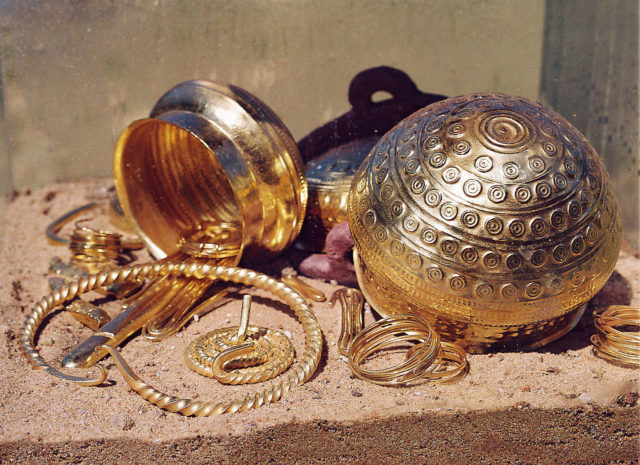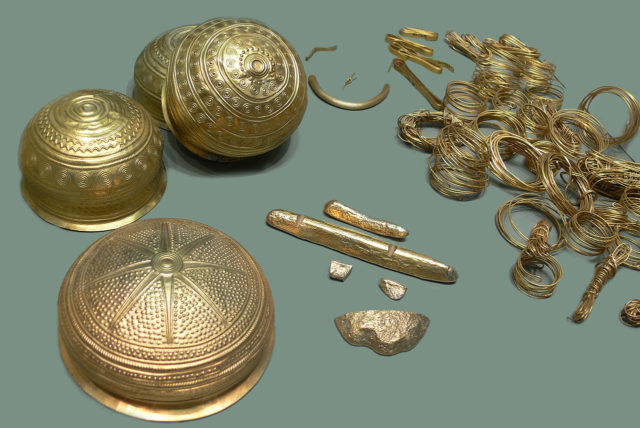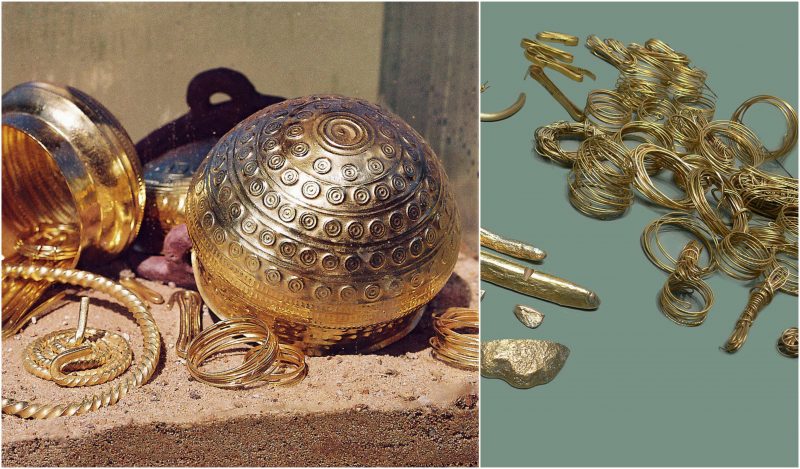There is no shortage of Cold War secrets, however, one controversy that didn’t receive much attention during cold war era, is also the most significant historically for the central Europe.
The Treasure of Eberswalde or Eberswalde Hoard is a hoard of gold containing 81 gold objects weighing more than 2.59 kg, and belong to the European Bronze Age, has also been the center of controversy between Germany and Russia since the end of Second World War.
It is also considered the largest hoard of gold objects from the prehistoric era ever discovered in Germany and is regarded as one of the most significant finds of the Bronze Age of the Central European regions.

When it was first discovered on May 16, 1913, the assembly of gold was buried 1m underground and was excavated within the walls of an old brass factory located at Oberbarnim (Finow), which is a part of Eberswalde in Brandenburg.
The director of Prehistoric Department of the Royal Museums, Carl Schuchhardtin Berlin was informed by the supervisor of the factory about the presence of the gold hoard, who then arranged for its safe removal to be kept in his museum.
At the time of discovery, the hoard was found securely deposited within the ‘globular vessel’. Contained within the bowl were eight beautifully crafted gold bowls, and further within those gold bowls were 73 gold objects. The gold bowls were found to be very thin-walled and chased meticulously with elaborate ornamental decorations all over they’re exterior.
The objects within the bowls were some neck rings, 60 arm spirals, and bracelets; another 55 spirals were also tied into small bundles and kept in the bowls. Amongst other objects were some gold ingots, a small metallic crucible, and two smaller pieces of some raw material that are believed to had been used for the production of these objects. Historians had come up with the name of the goldsmith for these objects as Villena-type, because of its bare significant resemblance to the Villena Treasure.
The history associated with the treasure of Eberswalde is rich, unfortunate and one that stems out of 20th century’s most bitter conflicts. After the Fall of Berlin to the Red Army in 1945, the Eberswalde Treasure went missing along with the legendary ‘Treasure of Priam’. Western allies and historians from Germany accused Red Army to have stolen the hoard; the Soviet Union at the time out rightly denied its involvement in the disappearance of the two historic finds. Decades later in a surprise admission, Russian President Boris Yeltsin announced that his government was in possession of the Priams’ Treasure, however, his authorities maintained that they had no inkling of the other find namely the Hoard of Eberswalde.
It was not until 2004 that the collection was spotted after decades of uncertainty; a German reporter working for Der Spiegel located the gold secretly stored in a depot within Russia’s Pushkin Museum in Moscow. Upon the revelation, Germany had officially made numerous return requests to the Russian governments, and the issue has since caused significant tension between the two governments.

A reproduction of the Hoard of Eberswalde has been prepared and kept on display at the Museum Fur Vor-und Fruhgeschichte in the Capital Berlin; one replica also stands on display in Eberswalde’s Stadt-und Kreismuseum; the replicas were prepared by the goldsmith Eckhard Herrmann.
Today, Russians proud themselves to be in possession of the Hoard of Eberswalde as part of the historic finds and artifacts looted from the Nazi Germany after the fall of Berlin in 1945.
